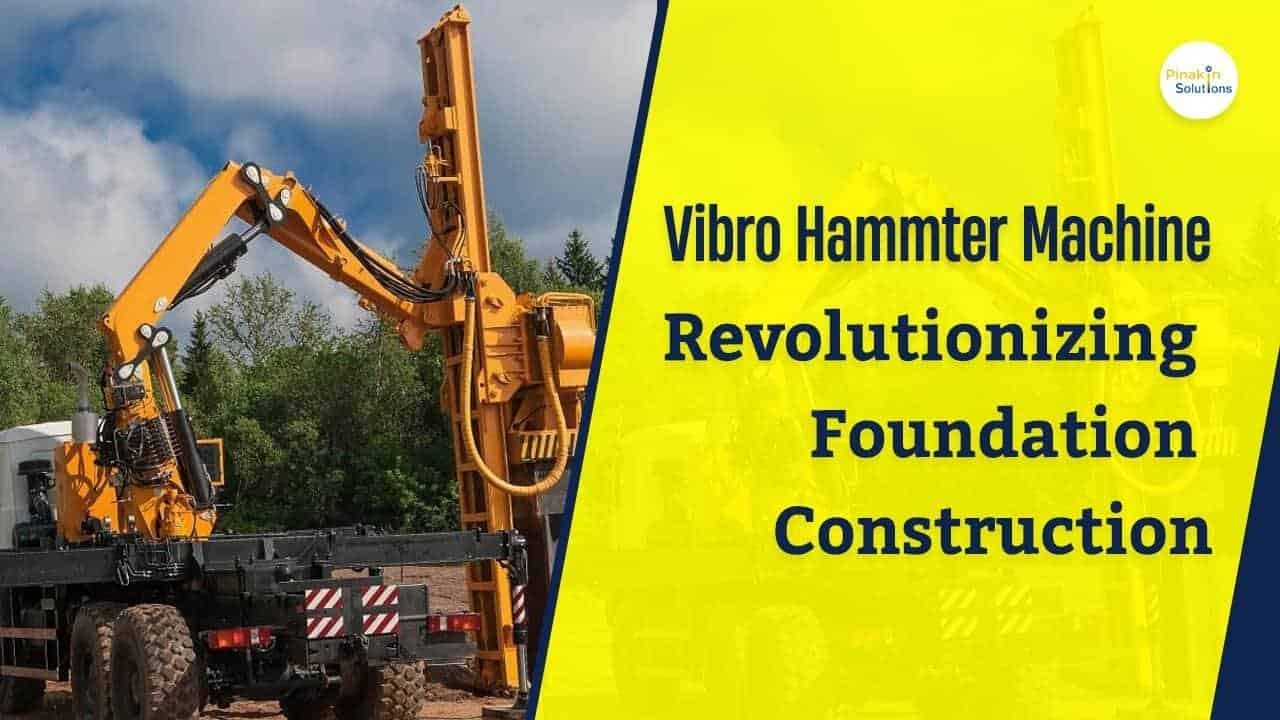In the realm of construction, innovation continues to reshape traditional practices, offering more efficient and effective solutions. One such innovation that has transformed the landscape of foundation construction is the vibro hammer machine. This article delves into the origins, development, and advantages of the vibro hammer machine, comparing it with traditional methods and highlighting its significant impact on the construction industry.
Table of Contents
ToggleOrigin and Development:
The concept of using vibration as a means of driving piles dates back to the early 20th century. However, it was not until the 1920s that the first practical vibro hammer machine was invented. This breakthrough innovation was the brainchild of Swedish engineer Ivar Tengbom.
Tengbom’s machine utilized the power of vertical vibrations to drive piles into the ground, significantly reducing soil friction and making the process of pile installation more efficient and less disruptive.
The Era Before Vibro Hammer Machine:
Before the advent of the vibro hammer machine, pile driving was predominantly a manual and labour-intensive task. Workers relied on impact hammers and human effort to insert piles into the ground.
This approach not only consumed substantial time but also subjected labourers to physical strain and posed challenges in terms of precision and consistency.
The manual methods were also noisy and could cause excessive vibrations in the surroundings, impacting both construction efficiency and neighbouring areas.
Comparing Man vs. Vibro Hammer Machine:
1. Efficiency
Man: Manual pile driving was time-consuming and required significant labour.
Vibro Hammer Machine: The machine’s rapid vertical vibrations expedite pile installation, drastically reducing project timelines.
2. Physical Strain
Man: Laborers exerted considerable physical effort, leading to fatigue and strain.
Vibro Hammer Machine: Operated by skilled personnel, minimizing physical strain and promoting worker well-being.
3. Precision
Man: Manual methods often resulted in imprecise pile placement.
Vibro Hammer Machine: The machine ensures accurate and consistent pile placement, contributing to stable foundations.
4. Noise and Vibration
Man: Manual pile driving generated high levels of noise and vibration.
Vibro Hammer Machine: Generates significantly less noise and vibration, minimizing disruption to nearby areas.
5. Speed and Productivity
Man: Manual methods were slower, impacting project timelines.
Vibro Hammer Machine: Rapid pile installation enhances overall construction productivity.
Vibratory Hammer: Unveiling the Power Behind Precise Foundation Construction
Advantages of Vibro Hammer Machine
- Efficiency: The vibro hammer machine’s ability to reduce soil friction allows for faster and smoother pile penetration, expediting construction timelines.
- Precision: Accurate pile placement ensures stable foundations and minimizes the risk of structural issues.
- Reduced Disruption: Minimal noise and vibration compared to manual methods improve construction site conditions and relations with surrounding areas.
- Skilled Operator: While skilled personnel are required to operate the machine, it reduces the physical burden on labourers.
Monthly Maintenance Cost of Using Vibro Hammer Machines:
The monthly maintenance cost of vibro hammer machines in Indian government projects can vary based on factors such as the model and manufacturer of the machine, usage intensity, and prevailing market rates for maintenance services.
On average, maintenance costs can range from 2% to 5% of the machine’s purchase price. This includes regular servicing, repairs, replacement of worn parts, and ensuring the machine’s optimal performance.
Vibratory Hammer on Rent: Enhancing Construction Efficiency and Flexibility
Profitability of Using Vibro Hammer Machines:
Project Timelines:
One of the significant advantages of using vibro hammer machines is their ability to expedite pile installation, thereby reducing project timelines. Quicker completion of projects can lead to cost savings and earlier revenue generation.
Labour and Operational Efficiency:
Vibro hammer machines require skilled operators but significantly reduce physical labour compared to manual methods. This can result in increased productivity and reduced labour-related costs.
Cost Savings:
Despite the initial investment and maintenance costs, vibro hammer machines can lead to long-term cost savings. Faster project completion, reduced labor, and minimized rework contribute to overall project cost-effectiveness.
Quality and Precision:
The accuracy of pile placement achieved by vibro hammer machines results in stable and durable foundations. This quality assurance can prevent future repair and maintenance costs.
Reduced Disruption:
The minimal noise and vibration generated by vibro hammer machines ensure reduced disruption to surrounding areas, mitigating potential legal or community-related costs.
How Vibro Hammer is Game Changer for Indian Government Development Projects?
Indian Market Scenario
The Indian construction equipment market has been witnessing substantial growth due to increased infrastructure development, urbanization, and government initiatives. The adoption of advanced technologies like vibro hammer machines is on the rise, driven by the need for efficient construction practices.
Scope of Having These Machines
Government Development Projects:
Government projects such as metro rail networks, highways, ports, and smart cities can benefit from the use of vibro hammer machines. These machines align with the government’s emphasis on efficiency, quality, and timely project completion.
Infrastructure Growth:
India’s ambitious plans for infrastructure development offer a vast scope for the use of vibro hammer machines. As the nation focuses on connectivity, industrial corridors, and sustainable development, these machines can play a pivotal role in constructing stable foundations.
Environmental Considerations:
Vibro hammer machines generate less noise and vibration, aligning with India’s stringent environmental regulations. Their use can lead to better community relations and compliance.
Cost-Effectiveness:
As the construction industry strives for cost-effective solutions, the use of vibro hammer machines can contribute to optimized project budgets by minimizing labour costs and speeding up construction.
Competitive Advantage:
Construction companies equipped with vibro hammer machines can gain a competitive edge by offering faster project completion, enhanced quality, and reduced disruptions.
Conclusion
The vibro hammer machine has revolutionized the way we approach foundation construction. Its origin and development have led to a more efficient, accurate, and less disruptive method of pile installation.
The contrast between manual methods and the vibro hammer machine underscores its significance in improving construction efficiency and worker well-being. As construction technology continues to evolve, the vibro hammer machine stands as a testament to the transformative power of innovation in the construction industry.





